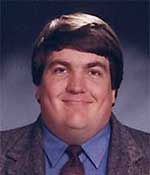Meeting Information
What Really Sank the Titanic
January 20, 2016American Center for Physics
College Park, MD

Speaker: Tim Foecke, NIST and University of Maryland
Topic: What Really Sank the Titanic
Time and Location: 1:00 PM, with Q&A to follow; in a 1st floor conference room at the American Center for Physics (www.acp.org), 1 Physics Ellipse, College Park, MD - off River Rd., between Kenilworth Ave. and Paint Branch Parkway.
Abstract: Titanic sank over 100 years ago, and fascination in the disaster still runs high. During 15 years of research and involvement in 3 expeditions to the wreck site, Dr. Foecke has examined the details of how the ship was damaged by the iceberg and how she sank. Laboratory analysis of over 500 pounds of iron from the wreck site, computer modeling and a review of historical documents provide the evidence. His conclusion is that a combination of management decisions, engineering design, sub-standard materials and a one-in-a-million encounter with an iceberg led to one of the most famous maritime disasters in history. Come hear the story.
Biography: Tim Foecke is currently the director of the NIST Center for automotive Lightweighting. He received his BS (1986) and PhD (1991) in Materials Science from the University of Minnesota, his thesis work being in the area of brittle fracture. He was awarded a National Research Council Post-Doctoral Fellowship at the National Institute of Standards and Technology to work on mechanical behavior of nanomaterials. He joined the NIST staff in 1993. He is also an Adjunct Professor in the Department of Materials Science and Engineering at the University of Maryland - College Park, where he teaches courses in materials selection and thermodynamics. His research interests are in defomation and fracture micromechanisms, failure analysis and historical metallurgy.
Upcoming APS Meetings
2024 Spring Meeting of the APS Eastern Great Lakes Section
April 12-13, 2024
2024 Meeting of the APS Division of Particles & Fields joint with the Annual Phenomenology Symposium (DPF-PHENO 2024)
May 13-17, 2024
55th Annual Meeting of the APS Division of Atomic, Molecular and Optical Physics
June 3-7, 2024
